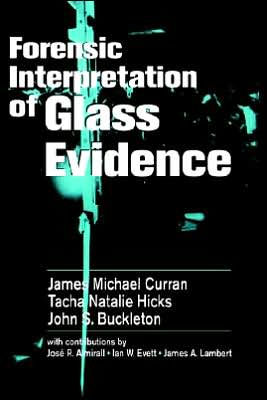Forensic Interpretation of Glass Evidence
Intended for forensic scientists and students of the discipline, Forensic Interpretation of Glass Evidence provides the practicing forensic scientist with the necessary statistical tools and methodology to introduce forensic glass evidence into the laboratory. With free software available for downloading at the author's Web site, scientists can apply their own data and draw conclusions using principles practiced in the text.
This book contains an introductory chapter on glass evidence procedures and analysis before covering topics such as classical approaches to handling glass evidence, the application of Bayesian statistics to forensic science, and the use of histograms.
By presenting both the physical and chemical examinations performed on glass along with a recommended interpretation, the author allows readers the luxury of having all reference materials contained within a single book. Useful for case-working forensic scientists, this book is ideal for students of forensic science at both the undergraduate and graduate levels, as well anyone currently working in the field.
1101594518
This book contains an introductory chapter on glass evidence procedures and analysis before covering topics such as classical approaches to handling glass evidence, the application of Bayesian statistics to forensic science, and the use of histograms.
By presenting both the physical and chemical examinations performed on glass along with a recommended interpretation, the author allows readers the luxury of having all reference materials contained within a single book. Useful for case-working forensic scientists, this book is ideal for students of forensic science at both the undergraduate and graduate levels, as well anyone currently working in the field.
Forensic Interpretation of Glass Evidence
Intended for forensic scientists and students of the discipline, Forensic Interpretation of Glass Evidence provides the practicing forensic scientist with the necessary statistical tools and methodology to introduce forensic glass evidence into the laboratory. With free software available for downloading at the author's Web site, scientists can apply their own data and draw conclusions using principles practiced in the text.
This book contains an introductory chapter on glass evidence procedures and analysis before covering topics such as classical approaches to handling glass evidence, the application of Bayesian statistics to forensic science, and the use of histograms.
By presenting both the physical and chemical examinations performed on glass along with a recommended interpretation, the author allows readers the luxury of having all reference materials contained within a single book. Useful for case-working forensic scientists, this book is ideal for students of forensic science at both the undergraduate and graduate levels, as well anyone currently working in the field.
This book contains an introductory chapter on glass evidence procedures and analysis before covering topics such as classical approaches to handling glass evidence, the application of Bayesian statistics to forensic science, and the use of histograms.
By presenting both the physical and chemical examinations performed on glass along with a recommended interpretation, the author allows readers the luxury of having all reference materials contained within a single book. Useful for case-working forensic scientists, this book is ideal for students of forensic science at both the undergraduate and graduate levels, as well anyone currently working in the field.
290.0
In Stock
5
1

Forensic Interpretation of Glass Evidence
178
Forensic Interpretation of Glass Evidence
178Hardcover(New Edition)
$290.00
290.0
In Stock

Product Details
| ISBN-13: | 9780849300691 |
|---|---|
| Publisher: | Taylor & Francis |
| Publication date: | 06/27/2000 |
| Edition description: | New Edition |
| Pages: | 178 |
| Product dimensions: | 6.12(w) x 9.19(h) x (d) |
About the Author
From the B&N Reads Blog
